#jazz chanteuse
Photo

Born on this day 70 years ago: actress, singer, sex kitten, perennial starlet, queen of terrible, terrible movies (like Santa Claus Conquers the Martians and Voyage of the Rock Aliens) and beloved kitsch icon turned credible and resilient jazz chanteuse - Pia Zadora (née Pia Alfreda Schipani, 4 May 1953)! For John Waters aficionados, Zadora will always be “Beatnik Girl” in Hairspray (1988): “I play my bongos, listen to Odetta, and then I iron my hair. Dig?” Every time I attend the Viva Las Vegas Rockabilly Weekender I endeavor to make a religious pilgrimage to see Pia’s one-woman cabaret revue in an Italian restaurant called Piero's, where she sings jazz standards in front of a giant Warhol portrait of herself. In April 2019, my friend Kevin and I even got to hang out with her, and she was an adorable, down to earth blast! Pictured: Zadora (wearing Bob Mackie!) in the 1980s.
#pia zadora#hairspray the movie#bob mackie#las vegas#starlet#sex kitten#kitsch#jazz chanteuse#cult cinema#lobotomy room#bad movies for bad people#bad movies we love
66 notes
·
View notes
Text

Billie Holiday au Downbeat club - New York - Février 1947
Photo de William P. Gottlieb
©Library of Congress
#et pendant ce temps-là#musique#music#jazz#chanteuse#singer#billie holiday#william p. gottlieb#downbeat club#new york#états-unis#usa#02/1947#1947
167 notes
·
View notes
Text
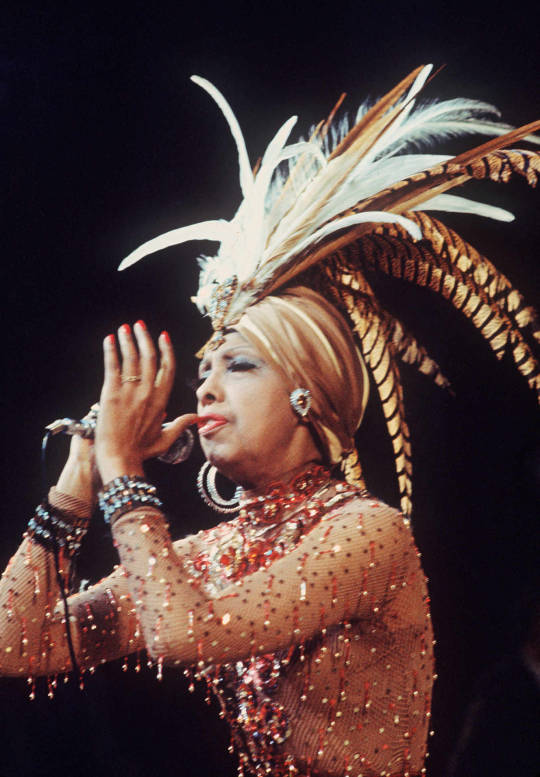
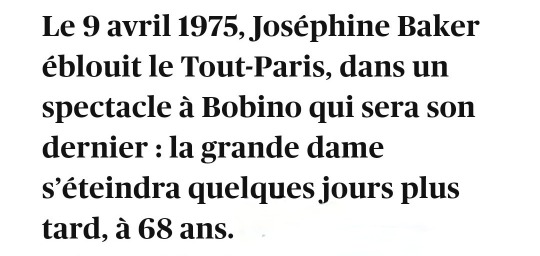
joséphine baker 1906 - 1975
youtube
joséphine baker - bobino 1975
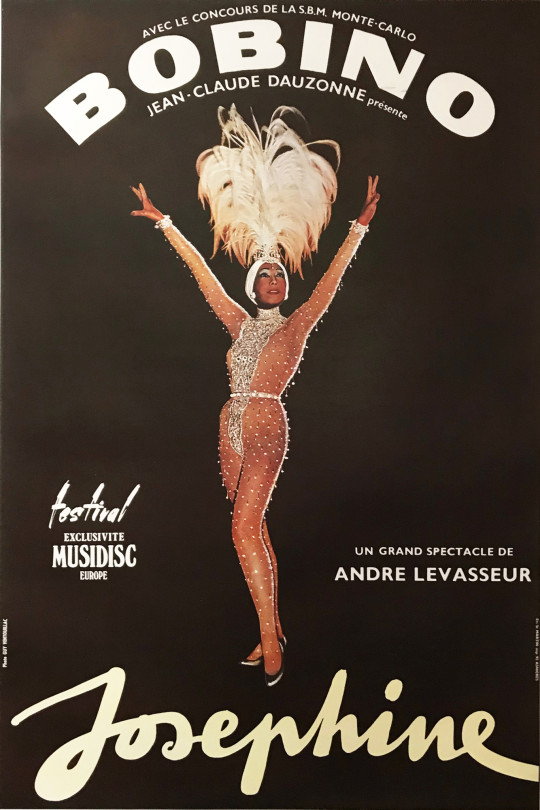
#joséphine baker#bobino#mannequin#actrice#chanteuse#musicienne de jazz#artiste de rue#danseuse#meneuse de revue#écrivaine#youtube
53 notes
·
View notes
Text
Eddy Mitchell- Ma discothèque
Cadeau à s'offrir ou à offrir !
Idéale
Ma discothèque idéale d’Eddy Mitchell est un vrai cadeau fait par Alain Artaud-Macari et Marc Maret, en cette fin d’année, En effet, ils rassemblent dans ce beau livre plus de cinquante références musicales témoignant de la vigueur des références musicales que le chanteur apprécie, de la chanson française à la country en passant par le Rock’Roll qu’il s’est employé à faire connaître en…
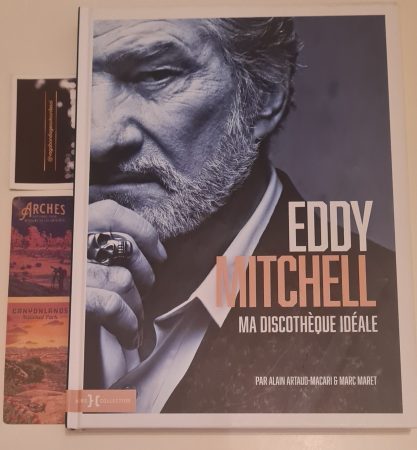
View On WordPress
#Beau livre#Beaux livres#Billet littéraire#Chansons françaises#Chanteur#Chanteurs#Chanteuse#Chanteuses#Chronique littéraire#Chronique livre#Chroniques littéraires#Country#Essai#Jazz#Littérature francaise#Litterature contemporaine#Musique#Musique du XXè siècle#Rock#Rock and Roll#Rock&039;d Roll
1 note
·
View note
Text
Correction bienvenue
L’ancien président états-unien Barack Obama aime faire des recommandations de lectures et de pièces musicales. Parmi ces dernières, il y a souvent du Ella Fitzgerald.
En 2015, il y avait «Let It Snow ! Let It Snow ! Let It Snow !» En 2016, 2017 et 2018, rien. En 2019, «How High the Moon». En 2020, rien. En 2021, «Lush Life». En 2022, rien. En 2023, «Cry Me a River» — voilà qui est…
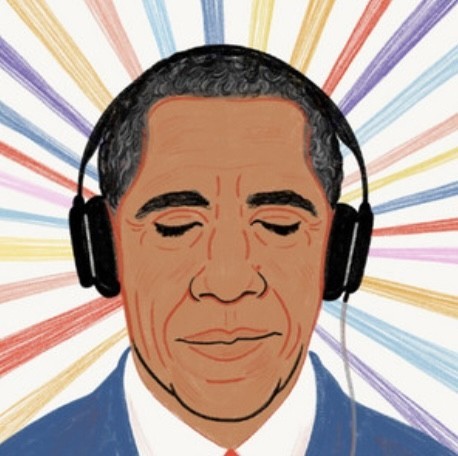
View On WordPress
#barack obama summer playlist#blues#chanson#chanteuse#ella#ella fitzgerald#fitzgerald#jazz#musique#série
0 notes
Text
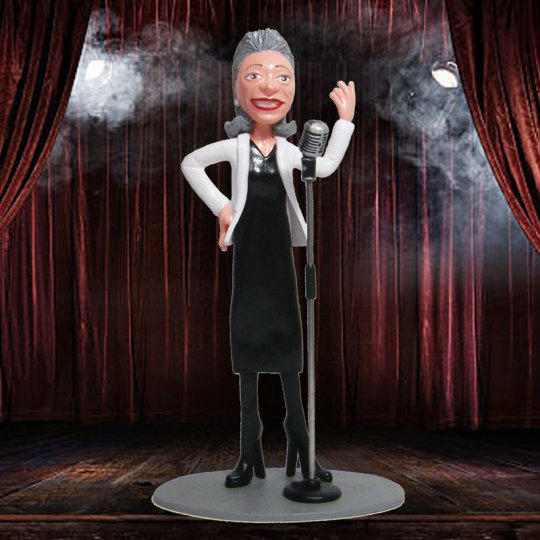

#chanteuse#vinyl figure#action figures#personnalisation#jazz#figurine#figurines#customized#customisation
1 note
·
View note
Text
Spot : Lisa Jazz Trio au Théâtre de l'Etang à Saint-Estève
Spot : Lisa Jazz Trio au Théâtre de l’Etang à Saint-Estève
LISA JAZZ TRIO – Une coproduction Théâtre De l’Etang – les RDVSE (Les rendez-vous de Saint-Estève) – Jeudi 20 octobre à 20h30
Issu d’une rencontre entre trois univers très différents, le Lisa Jazz Trio est né d’une envie commune de partager une musique basée sur des standards américains des années 30 à 50.
Julien Lebart, pianiste et Francis Adam, contrebassiste accompagnent la voix chaude et…
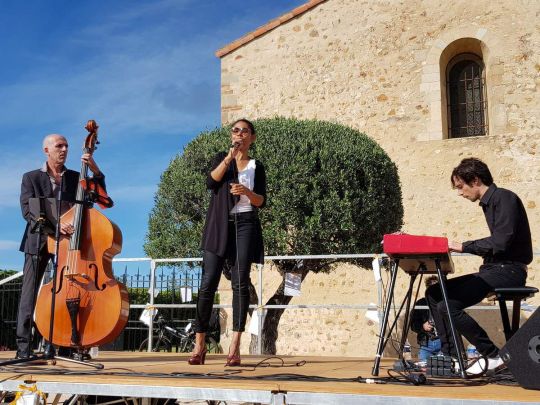
View On WordPress
#chanteuse#Francis Adam#Isabelle Durel#jazz#Julien Lebart#Le Journal Catalan#Lisa Jazz trio#musique#Pyrénées-Orientales#Saint-Estève#sortir#spectacle#Spot#standards américains
0 notes
Text

Carmen McRae was a contemporary of Sarah Vaughan and Ella Fitzgerald. She would avoid the media while on tour to concentrate on her shows. This may be the reason why we know Sarah and Ella better. This New York native was excellent. Pianist of exquisite dexterity, she decided to leave the keyboard for the microphone early in her career. This jazz singer had a beautiful voice that she controls perfectly, giving it the intonation she wants.
Her take on Take Five, by Dave Brubeck, is crafted. Skylark is another beautiful rendition. Ain’t misbehavin’ is revisited and she puts her signature on it. In an interview, Carmen McRae said: "Every word is very important to me. Lyrics come first, then the melody. The lyric of a song I might decide to sing must have something that I can convince you with. It's like an actress who selects a role that contains something she wants to portray." I admired her independence. Carmen McRae won many awards.
Carmen McRae chantait à la même époque que Sarah Vaughan et Ella Fitzgerald. Elle évitait souvent les médias pour se concentrer sur ses spectacles. Ceci pourrait expliquer le fait qu’elle est moins connue que Sarah et Ella. Elle est originaire de New York et maîtrise le piano à la perfection. Toutefois, elle choisira de chanter tôt dans sa carrière. Cette chanteuse de jazz a une belle voix, qu’elle contrôle, en lui donnant l’intonation qu’elle veut. Sa version de « Take five », de Dave Brubeck, est parfaite. « Skylark » est un autre morceau réussi. Elle met sa signature sur « Ain’t misbehavin’ ». Dans une entrevue, Carmen McRae a dit : « Toutes les paroles sont importantes pour moi. Les paroles viennent d’abord, ensuite la mélodie. Les paroles d’une chanson que je pourrais chanter doivent avoir quelque chose que je peux utiliser pour vous convaincre. C’est comme une actrice qui choisit un rôle qu’elle veut interpréter. » Artiste magnifique dont j’admire l’indépendance. Carmen McRae a obtenu de nombreux prix.
10 notes
·
View notes
Text
'Cabaret' comes back to Broadway starring Eddie Redmayne and Gayle Rankin
APRIL 20, 20248:00 AM ET
HEARD ON WEEKEND EDITION SATURDAY
NPR's Scott Simon speaks to Eddie Redmayne and Gayle Rankin, who star in the new Broadway revival of "Cabaret."
SCOTT SIMON, HOST:
You probably recognize the music from the first notes.
(SOUNDBITE OF SONG, "WILLKOMMEN")
EDDIE REDMAYNE: (As Emcee, singing) Willkommen, bienvenue, welcome. Fremde, etranger, stranger.
SIMON: "Cabaret," the 1966 Broadway musical by Joe Masteroff, John Kander and Fred Ebb. It's drawn from Christopher Isherwood's memoir of high times and hot jazz and is set in a fictional Berlin nightspot called the Kit Kat Club.
(SOUNDBITE OF SONG, "WILLKOMMEN")
REDMAYNE: (As Emcee, singing) Im Cabaret, au Cabaret, to Cabaret.
SIMON: At a time when sequins, high-stepping flappers and forbidden love gives way to goose-stepping and beating Jews on the street. A new revival of "Cabaret" has opened on Broadway after winning seven Olivier Awards in London. Eddie Redmayne plays the Emcee, and he joins us from New York. May I say willkommen to you?
REDMAYNE: You may indeed. Hi.
SIMON: And Gayle Rankin the British chanteuse who comes to Berlin. I get to say fraulein Sally Bowles.
(LAUGHTER)
GAYLE RANKIN: Hello, darling (laughter). I had to (laughter).
SIMON: Oh, my gosh. Wait. Sorry. Let me just catch my heart for a moment. Thanks so much.
(LAUGHTER)
SIMON: Eddie Redmayne, you've played the Emcee before. I was about to say early in your career, but really, before you started your career.
REDMAYNE: That's absolutely true. Yes, I was a kid. I was at high school when I - we did a little school production. I think I was about 14, 15 years old. It was one of those moments in my life where I would say really I fell in love with theater. It thrilled me, and it made me think, and it moved me. And so I always sort of credit it weirdly as being the thing that that got me into acting full and proper.
SIMON: What does the Emcee do for the audience?
REDMAYNE: I think one of the reasons the Emcee is such a iconic role and one that so many actors lean into is he's so enigmatic. He was conjured by Hal Prince and Joel Grey as a way of connecting the Sally Bowles story, and so he almost lives in an abstract place. And so for an actor, that is joyous because there are sort of no limitations on the one hand, and it's also quite daunting. He sort of starts as a puppeteer almost, the kind of the Shakespearian fool, perhaps...
(SOUNDBITE OF SONG, "TWO LADIES")
REDMAYNE: (As Emcee) Come on, my little ones.
UNIDENTIFIED ACTOR #1: (As character, singing) Beedle dee, deedle dee, dee.
UNIDENTIFIED ACTORS: (As characters, singing) Beedle dee, deedle dee, dee.
REDMAYNE: (As Emcee, singing) Beedle dee, deedle dee, beedle dee, deedle dee.
UNIDENTIFIED ACTOR #2: (As character, singing) Beedle dee, deedle dee, dee.
REDMAYNE: (Singing) Two ladies.
UNIDENTIFIED ACTOR #2: (As characters, singing) Beedle dee, dee dee dee.
REDMAYNE: ...Who then, over the course of the piece, rises to the all-knowing king or the sort of from puppeteer to conductor, and he becomes rather than the victim, he's almost the perpetrator. And so this person that's hopefully pulled you in at the beginning of the evening and seduced you and made you laugh, you realize is actually conducting the entire piece.
(SOUNDBITE OF SONG, "IF YOU COULD SEE HER")
REDMAYNE: (As Emcee, singing) If could see her through my eyes, she wouldn't look Jewish at all.
SIMON: And Gayle Rankin, you have played other roles in "Cabaret" before Sally Bowles, haven't you?
RANKIN: I have. I made my Broadway debut, actually, playing Fraulein Kost in the Sam Mendes revival 10 years ago with Alan and Michelle and Emma Stone. Eddie and I were just talking about it just the other day, and he was like, is this so weird? Is it so weird? And I was like, you know what? It's not weird. It's not weird. And it doesn't - I feel like a new person and in a new world 'cause that's - you know, "Cabaret," it comes back, and the world is new a decade later. It's new, and it's also the same.
SIMON: Help us look inside of Sally's mind and heart. What brings her to Berlin in the early '30s?
RANKIN: You know, there's not a lot that's given to us, you know, about Sally.
(SOUNDBITE OF SONG, "MEIN HERR")
RANKIN: (As Sally Bowles, singing) But I do what I can, inch by inch, step by step, mile by mile.
For me, it was very important for me to kind of figure out Sally's relationship to artistry and creativity and why she ended up at the club. And there's a huge, you know, kind of cultural discussion about whether Sally has talent or whether she does not have talent. And that's a really fascinating thing, I think, to me. And I think it's amazing how people think they can decide or that they know that she's not - quote-unquote, "not talented" or is talented. It's just wild to me.
SIMON: I have to ask. There are so many famous names who have played the two parts into which you two step now - Dame Judi Dench, Natasha Richardson, Michelle Williams. Alan Cumming, Joel Grey have played the Emcee. I didn't even mention the film with Liza Minnelli and Joel Grey, now, did I? So do previous productions inspire you, or do you just have to, you know, leave them in the fridge?
REDMAYNE: I've been such a passionate fan of "Cabaret" since I was a kid that I've seen everything in the sense that I've - you can see some of Sam's production on YouTube. I saw Sam's production with Emma and Alan. I've watched the film. I even saw a random Spanish version when I was...
RANKIN: Oh.
REDMAYNE: ...Younger. And they've been so brilliant, the productions before, that I hope we come sort of standing on their shoulders and with great respect for them, but also trying to do something new and fresh. And one of the things that was important for me was that idea - one of the Emcee's first lines is leave your troubles outside, and that for audience members coming to see this in New York, you enter via a sort of back alley.
You get taken down into the underbelly of the theater, where there is an entire cast of performers playing in these really beautiful spaces, and you get a bit discombobulated. It's labyrinthine, and you get sort of lost, so that by the time you are taken actually into the theater itself, which sits in the round, hopefully, you have genuinely left all memory of 52nd Street outside.
SIMON: I got to say, your production reached through to me with something I hadn't quite realized before. Things are terrible and getting worse on the streets. They're beating Jews and putting them into ghettos. There's a refuge in the club. There's also a refuge in Fraulein Schneider's boardinghouse, where she, for the first time in her life, really has a relationship with a man who happens to be a fruit seller and a Jewish man. Both your characters have that refuge in the club, and they have their characters in the boardinghouse. But, you know, refuges - well, real life can bring them down, can't they?
REDMAYNE: Absolutely. And I feel like the play, in its essence, is a warning in some ways. It serves as a warning about when hate can take over humanity and when humanity is lost to hate. And that feels so relevant at this moment. There are so many examples of that throughout the world today, but I hope that the brilliance of what Kander, Ebb and Masteroff created was that it seduces you in and in a way that feels really sort of magnificent but then begins to touch on these - this repetition of history that resounds and serves as a warning.
RANKIN: And it kind of - what's so scary about it is how the refuge is created, and then you slowly realize that actually, there's a poison inside of your refuge.
SIMON: What do you take in from the audience every night?
REDMAYNE: Well, I mean, one of the joys for me as a performer is the intimacy of the space. So there's not really a sort of a bad seat in the house at the August Wilson, and the other character in the room with the Emcee is the audience. And what I have loved about our experience in New York is people because it's an event almost, the evening, from the second you pass the threshold. The theater's been redesigned and reconfigured in a way. People are getting dressed up. So you have people in black tie next to people in fetish gear next to people in jeans and a T-shirt, and you get all sorts of characters.
RANKIN: And to have a relationship with the audience, you know, and to enjoy how fun...
REDMAYNE: Yeah.
RANKIN: ...This is and can be throughout the show till the very end - what is written in this piece, there's - we're still laughing through tears at a certain point toward - for the very end of the show, and that's what's so kind of timeless and important about this space, that there's something that doesn't die inside of our club.
SIMON: Gayle Rankin and Eddie Redmayne star in the new production of "Cabaret" on Broadway. Thank you both so much for being with us.
REDMAYNE: Thanks for having us.
RANKIN: Thank you so much.
(SOUNDBITE OF SONG, "TOMORROW BELONGS TO ME")
REDMAYNE: (As Emcee, singing) The sun on the meadow is summery warm. The stag in the forest runs free.
https://www.npr.org/2024/04/20/1246083026/cabaret-comes-back-to-broadway-starring-eddie-redmayne-and-gayle-rankin
#eddie redmayne#gayle rankin#npr interview#the emcee#sally bowles#kit kat club#cabaret new production#cabaret nyc#august wilson#theatre#interview
4 notes
·
View notes
Text
LÉGENDES DU JAZZ
BILLY HIGGINS, ‘’SMILING BILLY’’
“Billy Higgins’s talent will never be duplicated – not that any style can be – but his mark on jazz history is indelible. Billy Higgins represents four decades of total dedication to his chosen form of American music: jazz.”
- Cedar Walton
Né le 11 octobre 1936 à Los Angeles, en Californie, Billy Higgins était issu d’une famille de musiciens. Élevé dans le ghetto afro-américain de Watts, Higgins avait commencé à jouer de la batterie à l’âge de cinq ans sous l’influence d’un de ses amis batteurs. À l’âge de douze ans, Higgins avait travaillé avec des groupes de rhythm & blues, notamment avec des musiciens comme Amos Milburn et Bo Diddley. Au début de sa carrière, Higgins avait également collaboré avec les chanteurs et chanteuses Brook Benton, Jimmy Witherspoon et Sister Rosetta Tharpe.
Surtout influencé par Kenny Clarke, Higgins avait aussi été marqué par Art Tatum et Charlie Parker. En octobre 2001, le chef d’orchestre John Riley du Vanguard Jazz Orchestra avait résumé ainsi les influences d’Higgins: “Billy dug the melodiousness of Max Roach and Philly Joe Jones, Art Blakey’s groove, Elvin Jones’s comping, Ed Blackwell’s groove orchestration, and Roy Haynes’ individualist approach.” Higgins avait hérité de son surnom de ‘’Smiling Billy’’ en raison du plaisir communicatif qu’il avait de jouer de la batterie.
DÉBUTS DE CARRIÈRE
Higgins, qui s’était rapidement intéressé au jazz, avait commencé sa carrière en se produisant avec différents musiciens locaux comme Dexter Gordon, Carl Perkins, Leroy Vinnegar, Slim Gaillard, Teddy Edwards, Joe Castro et Walter Benton. À l’âge de quatorze ans, Higgins avait rencontré le trompettiste Don Cherry. En 1953, le duo était parti en tournée sur la Côte ouest avec les saxophonistes George Newman et James Clay dans le cadre du groupe The Jazz Messiahs.
En 1957, Higgins s’était joint au quartet de Red Mitchell qui comprenait également la pianiste Lorraine Geller et le saxophoniste ténor James Clay. Higgins avait d’ailleurs fait ses débuts sur disque avec le groupe de Mitchell dans le cadre d’une collaboration avec les disques Contemporary de Lester Koenig. Higgins avait quitté le groupe de Mitchell peu après pour se joindre à la nouvelle formation d’Ornette Coleman, aux côtés de Don Cherry à la trompette, de Walter Norris au piano, et de Don Payne et de Charlie Haden à la contrebasse. Higgins, qui avait commencé à pratiquer avec Coleman en 1955, avait fait partie du groupe du saxophoniste sur une base permanente de 1958 à 1959, participant notamment à l’enregistrement des albums ‘’Something Else’’ (février-mars 1958), ‘’The Shape of Jazz to Come’’ et ‘’Change of the’’ Century’’, tous deux enregistrés en 1959. Higgins avait également participé aux concerts controversés du groupe au club Five Spot de New York en novembre 1959. Commentant la prestation du groupe, le critique Jon Thurber du Los Angeles Times avait qualifié le concert d’un des événements les plus légendaires de l’époque. Thurber avait ajouté: ‘’The event crowded the room with every available jazz musician and aficionado.”
Higgins s’étant vu interdire l’accès des clubs de New York à la suite d’une altercation avec la police, Higgins s’était joint au quintet de Thelonious Monk. Il était par la suite allé jouer avec le groupe John Coltrane en 1960.
Le 21 décembre 1960, Higgins avait de nouveau retrouvé Coleman dans le cadre de l’enregistrement de l’album controversé ‘’Free Jazz: A Collective Improvisation’’ mettant en vedette le double quartet de Coleman, composé de Coleman au saxophone alto, de Don Cherry à la trompette et au cornet, de Freddie Hubbard à la trompette, d’Eric Dolphy à la flûte, à la clarinette basse et au saxophone soprano, de Scott LaFaro et Charlie Haden à la contrebasse et de Higgins et Ed Blackwell à la batterie.
Devenu un des batteurs les plus en demande du monde du jazz, Higgins avait participé à plusieurs sessions pour les disques Blue Note dans les années 1960, principalement dans des contextes de hard bop. En 1962-63, Higgins s’était joint au groupe de Sonny Rollins avec qui il avait participé à une tournée en France. À la même époque, Higgins s’était également produit avec Donald Byrd, Dexter Gordon, Hank Mobley, Art Farmer, Jimmy Heath, Steve Lacy, Jackie McLean, Herbie Hancock et Lee Morgan.
Le jeu de Higgins à la batterie avait été particulièrement mis en évidence sur des enregistrements comme “Point of Departure’’ d’Andrew Hill, “Takin' Off’’ d’Herbie Hancock (qui comprenait le classique ‘’Watermelon Man’’), “Freedom Jazz Dance” d’Eddie Harris, ‘’Go !’’ de Dexter Gordon et “The Sidewinder’’ de Lee Morgan.
À partir de 1966, Higgins s’était produit régulièrement avec le pianiste Cedar Walton, avec il a enregistré plusieurs albums pour des compagnies de disques européennes jusqu'au milieu des années 1980.
DERNIÈRES ANNÉES
Après s’être fait désintoxiquer en 1971, Higgins avait formé le groupe Brass Company avec le saxophoniste ténor Claude Bartee et le trompettiste Bill Hardman. Après s’être installé à Los Angeles en 1978, Higgins avait formé avec Walton et le le saxophoniste George Coleman le groupe Eastern Rebellion. À la fin des années 1970, Higgins avait également enregistré comme leader, faisant paraître des albums comme ‘’Soweto’’ (1979), ’’The Soldier’’ (1979) et ‘’Once More’’ (1980).
Dans les années 1980, Higgins avait également collaboré avec Pat Metheny et Slide Hampton. Tout en participant à des tournées internationales avec les Timeless All Stars et à des réunions avec Ornette Coleman et Don Cherry, Higgins avait eu un petit rôle dans le film de Bertrand Tavernier ‘’Round Midnight’’ aux côtés de Dexter Gordon en 1986. Il avait aussi fait partie du trio de Hank Jones. Toujours en 1986, Higgins avait fait partie du Quartet West de Charlie Haden, aux côtés d’Ernie Wax au saxophone et d’Alan Broadbent au piano. Après avoir connu certains problèmes de santé, Higgins avait été éventuellement remplacé par Larance Marable.
Très impliqué socialement, Higgins avait co-fondé en 1989 avec le poète Kamau Daáood le World Stage, un centre communautaire et culturel qui avait pour but de favoriser le développement de la musique, de la littérature et de l’art afro-américain. Le groupe, qui soutenait également la carrière de jeunes musiciens de jazz, organisait régulièrement des ateliers, des enregisrements et des concerts dans le quartier de Leimert Park à Los Angeles. Tous les lundis soirs, Higgins donnait des cours de batterie aux membres de la communauté. Higgins, qui s’intéressait particulièrement aux enfants, avait déclaré au cours d’une entrevue accordée au magazine LA Weekly en 1999:
"They should bus children in here so they can see all this, so they could be a part of it. Because the stuff that they feed kids now, they'll have a bunch of idiots in the next millennium as far as art and culture is concerned. I play at schools all the time, and I ask, 'Do you know who Art Tatum was?' 'Well, I guess not.' Some of them don't know who John Coltrane was, or Charlie Parker. It's our fault. Those who know never told them. They know who Elvis Presley was, and Tupac, or Scooby-Dooby Scoop Dogg--whatever. Anybody can emulate them, because it's easy, it has nothing to do with individualism. There's so much beautiful music in the world, and kids are getting robbed.’’
Également professeur, Higgins avait enseigné à la faculté de jazz de l’Université de Californie à Los Angeles (UCLA). Il avait aussi été très impliqué dans plusieurs activités en faveur de la conservation et de la promotion du jazz.
Toujours très en demande dans les sessions d’enregistrement, Higgins s’était produit sur une base régulière avec le saxophoniste Charles Lloyd de 1999 à 2001. Il dirigeait aussi ses propres groupes.
Atteint d’une maladie des reins, Higgins avait dû mettre sa carrière sur pause dans les années 1990, mais il avait repris sa carrière après avoir subi avec succès une greffe du foie en mars 1996, se produisant notamment avec Ornette Coleman, Charles Lloyd et Harold Land.
Billy Higgins est mort le 4 mai 2001 au Daniel Freeman Hospital d’Inglewoood, en Californie, des suites d’un cancer du foie. Il était âgé de soixante-quatre ans. Ont survécu à Higgins ses fils Ronald, William Jr., David et Benjamin, ses filles Ricky et Heidi, son frère Ronald, son gendre Joseph (Jody) Walker, son neveu Billy Thetford et sa fiancée Glo Harris. À l’époque, Higgins avait divorcé de sa première épouse Mauricina Altier Higgins.
Peu avant sa mort, Higgins avait joué le rôle d’un batteur de jazz dans le film ‘’Southlander’’ de Steve Hanft et Ross Harris.
Au moment de son décès, Higgins venait d’être hospitalisé pour une pneumonie et attendait une seconde greffe du foie. Dans son dernier numéro publié avant la mort de Higgins, la revue française Jazz Magazine avait lancé une campagne de souscription en faveur de Higgins, le batteur n’ayant pas des revenus suffisants pour couvrir ses frais médicaux. Deux ans avant sa mort, le saxophoniste Charles Lloyd avait témoigné de la santé fragile de Higgins en déclarant: ’’Billy Higgins a une santé précaire, et cette fragilité physique confère à son jeu une délicatesse unique. Jouer avec lui, c'est un peu comme jouer à la maison. Il y a une telle conjonction entre nous. Un seul regard suffit et le disque est enregistré.’’ Comparant Higgins à un maître zen, Lloyd avait ajouté: “everybody who plays with him gets that ecstatic high.” Rendant hommage à Higgins après sa mort, son collaborateur de longue date, le pianiste Cedar Walton, avait ajouté: “Billy Higgins’s talent will never be duplicated – not that any style can be – but his mark on jazz history is indelible. Billy Higgins represents four decades of total dedication to his chosen form of American music: jazz.”
Higgins avait livré sa dernière performance le 22 janvier 2001 dans le cadre d’un concert présenté au club Bones and Blues de Los Angeles. Le concert, qui mettait également en vedette les saxophonistes Charles Lloyd et Harold Land, avait pour but de soutenir la lutte d’Higgins contre le cancer du foie.
Reconnu pour son swing léger mais actif, son jeu subtil et raffiné et sa façon mélodique de jouer de la batterie, Billy Higgins avait collaboré avec les plus grands noms du jazz au cours de sa carrière, de Ornette Coleman à Don Cherry, en passant par Sonny Rollins, Cedar Walton, Herbie Hancock, Abudullah Ibrahim, Bheki Mseleku, Roy Hargrove, Pat Metheny, Charles Lloyd, Donald Byrd, Freddie Hubbard, Eric Dolphy, John Scofield, Thelonious Monk, Scott LaFaro, Cecil Taylor, Charlie Haden, Hank Jones, Dexter Gordon, Hank Mobley, Grant Green, Joe Henderson, Art Farmer, Sam Jones, Dave Williams, Bob Berg, Monty Waters, Clifford Jordan, Ira Sullivan, Sun Ra, Milt Jackson, Jimmy Heath, Joshua Redman, John Coltrane, Eddie Harris, Steve Lacy, David Murray, Art Pepper, Mal Waldron, Jackie McLean et Lee Morgan. Higgins avait également collaboré avec le compositeur La Monte Young.
Higgins a participé à plus de 700 enregistrements au cours de sa carrière, ce qui en faisait un des batteurs les plus enregistrés de l’histoire du jazz. Qualifiant le jeu de Higgins, le critique Ted Panken du magazine Down Beat avait commenté: "To witness him--smiling broadly, eyes aglimmer, dancing with the drum set, navigating the flow with perfect touch, finding the apropos tone for every beat--was a majestic, seductive experience." De son côté, le chef d’orchestre Larry Riley avait précisé: “Billy was a facilitator, not a dominator. He would enhance the direction the music ‘wanted’ to go in rather than impose his own will on the composition. You can hear that Billy was a master at creating a good feeling in the rhythm section. Dynamically, he used the entire spectrum— but with great restraint. His comping and overall flow were very precise but very legato.”
Higgins, qui avait surtout appris son métier en utilisant une approche d’essais-erreurs, avait résumé ainsi sa méthode d’apprentissage:
“That’s where you learn. You learn to be in context with the music and interpret. You make your mistakes and you learn. Most of the drummers that are working are people who know how to make the other instruments get their sound. Kenny Clarke was a master at that. It sounds like he was doing very little, and he was, but what he implied made all the instruments get their sound. Philly Joe, Elvin—as strong as they played, they still bring out the essence of what the other musicians are playing. Roy Haynes, Max, Art Blakey—none of them played the same. You try to add your part, but the idea is to be part of the music and make it one. That’s the whole concept for me.”
Décrivant la contribution d’Higgins à l’histoire du jazz, le contrebassiste Ron Carter avait ajouté: “Billy Higgins was the drummer of the 20th century who put the music back into the drums. He was fabulous. He always played the form, and he was aware not only of the soloists, but also of his rhythm section mates.” Saluant le professionnalisme et la grande préparation d’Higgins, Carter avait précisé: “He was always on time, with his equipment ready, and he contributed to the general outlook of the group no matter where [we were] or how many people were involved. He made the music feel good.” De son côté, le pianiste Cedar Walton avait commenté: “His style is well-documented, but to see Billy in person at his drums was the ultimate jazz experience.”
Billy Higgins avait été élu ‘’Jazz Master’’ par la National Endowment for the Arts en 1997. En 1988, Higgins avait également remporté un prix Grammy conjointement avec Ron Carter, Herbie Hancock et Wayne Shorter pour la composition “Call Sheet Blues” tirée de la bande sonore du film ‘’Round Midnight.’’ Par la suite, Higgins avait fait partie du Round Midnight Band avec le saxophoniste Dexter Gordon.
Le saxophoniste Charles Lloyd avait rendu un des meilleurs hommages qu’on pouvait rendre à Higgins lorsqu’il avait déclaré: "Jazz is the music of wonder and, and he's the personification of it.’’ Higgins s’était toujours considéré comme un peu privilégié d’avoir pu faire une carrière musicale. Comme il l’avait mentionné peu de temps avant sa mort: "I feel blessed to play music, and it's also an honor to play music. You've got a lot of people's feeling in your hands."
2 notes
·
View notes
Video
youtube
A Bed and a Chair: A New York Love Affair (2013)
To honour the great Stephen Sondheim on what would have been his 93rd birthday, I present my remaster* of his unique 2013 revue, A Bed and a Chair, which debuted November 13th at New York City Center for an all-too-brief 5 day engagement.
Far from the usual songbook recital, the show was a new creative collaboration between Sondheim and jazz composer Wynton Marsalis, who reinterpreted each track especially for his 15-piece jazz ensemble. The resulting work casts these enduring showtunes in a new light; the gilded brass and velvet tones nods back to an era of Manhattan ballrooms and big band orchestras – the kind of lost urban elegance we search for in the records of Henry Mancini and Johnny Mercer. In ways both good and sometimes contradictory, Sondheim’s New York neuroses has never sounded so luxe.
Let Jeremy Jordan effortlessly break your heart. Delight at Bernadette Peters’ left-field choices. Hear Norm Lewis somehow evoke every single member of the Rat Pack in his rendition of “Someone Is Waiting”. Try not to fall in love with French chanteuse Cyrille Aimée, a wildcard borrowed from the jazz world and the ace that makes the entire hand work. 90 minutes.
*mixed from two separate audio and video sources. While the video is 144p, to my knowledge it’s the highest quality recording of the entire show currently available. If anyone has a better looking or sounding copy, get in touch! Many thanks to the original recorders/preservationists.
13 notes
·
View notes
Photo
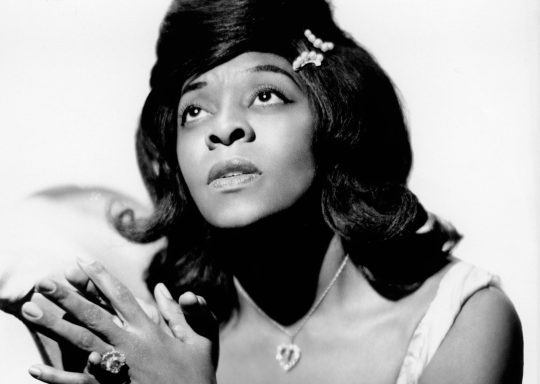
“Although Dinah Washington is remembered as the Queen of the Blues, she effectively wrapped her vinegary style around everything from Big Band swing to Country & Western during her twenty-year career. Even so, her recordings were available only in ghetto record stores until 1959 when she scored an early R&B crossover with her sultry rendition of “What a Diff’rence a Day Makes.” Her subsequent teamwork with Brook Benton (“You’ve Got What It Takes” and “A Rockin’ Good Way”) gave her two more hits the following year, making her one of the top female R&B artists of the postwar years.
While giving her the financial security to buy the Detroit restaurant she’d always wanted, success did little to soothe her tempestuous personal life. She made seven trips to the wedding altar – the last time with Detroit Lions football star Dick (Nighttrain) Lane, in the summer of 1963. In December of the same year, the thirty-nine-year-old singer, who had been using diet pills to get her weight down for an upcoming concert date, died after taking barbiturates and alcohol to counter the effect of the amphetamines.”
/ From Rock’N’Roll Confidential (1984) by Penny Stallings /
Died on this day: Jukebox Queen Dinah Washington (29 August 1924 - 14 December 1963).
#dinah washington#queen of the blues#rhythm and blues#jazz chanteuse#jazz diva#lobotomy room#penny stallings#kween#fierce#diva#african-american#rocknroll confidential
16 notes
·
View notes
Text

Billie Holiday au Downbeat club - New York - Février 1947
Photos de William P. Gottlieb
©Library of Congress

#et pendant ce temps-là#musique#music#jazz#chanteuse#singer#billie holiday#william p. gottlieb#downbeat club#broadway#manhattan#new york#états-unis#usa#02/1947#1947
2 notes
·
View notes
Note
DC will never fully explore Alan's time in underground pre stonewall gay scene of the early-mid 20th century. Reading about ancient Greeks and dodging the police morals squad set to a soundtrack of jazz cabaret chanteuses. Alan would have been a member of the Mattachine Society.
I think DC is saying Alan is too closeted to do any of this, which I guess makes sense... we will have to ask Roy Thomas to make a gay member of the All-Star Squadron when he finally returns and kicks Geoff off JSA.
3 notes
·
View notes
Text
EYM Trio & Varijashree Venugopal – Bangalore

EYM Trio (prononcer : ème) décline les initiales des prénoms des trois musiciens à l'énergie débordante. Élie Dufour au piano, Yann Playphet à la contrebasse et Marc Michel à la batterie. Pour son nouvel album, le trio a invité la chanteuse et flûtiste indienne Varijashree Venugopal. Le disque Bengalore sort le 06/10/2023 chez Melmax Music avec une tournée qui passe à Paris au 360 Factory le 06/10/2023.
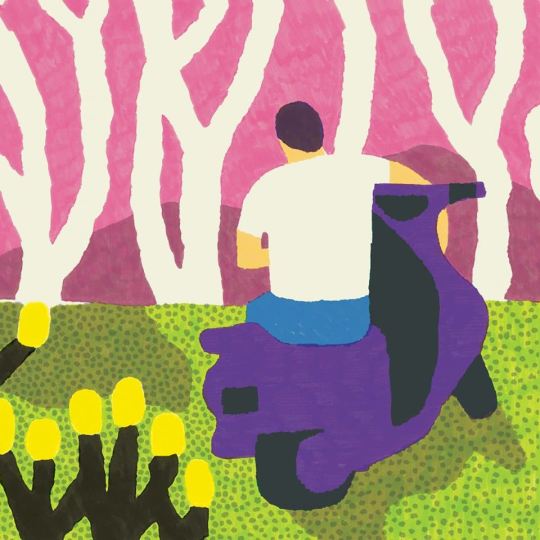
Les infatigables globe-trotteurs de EYM Trio reviennent de deux ans de tournée en Asie et en Europe avec un 4ème album entre les mains, Banaglore. Cette ville est une petite bourgade de 14 millions d’habitants au Sud de l’Inde dans l’Etat du Karnataka. C’est là que le trio composé d’Élie, Yann et Marc (EYM) a rencontré Varijashree. C’est une ville avec laquelle le trio a lien particulièrement fort après des années de tournées.
Cet album se veut à la croisée des chemins entre le jazz et la musique Carnatic, se jouant des frontières entre les deux univers. Les morceaux du trio sont, à la manière d’une structure en kaplas, déconstruits pour être reconstruits différemment.
Voici en écoute le titre Song for Anilou :
youtube
En tournée :
06.10.23 : 360 Factory - Paris
07.10.23 : Crescent - Mâcon
11.10.23 : Périscope - Lyon
12.10.23 : Théâtre Sainte-Marie d’en Bas - Grenoble
13.10.23 : CRR d’Annecy
25.01.24 : Bertinoro (IT)
26.01.24 : Jazz Club Ferrara (IT)
27.01.24 : Altitude Jazz - Briançon
3 notes
·
View notes
Text
L’adolescence d’Ella
Quand on l’interrogeait sur son adolescence, Ella Fitzgerald a souvent eu recours à une ellipse. Elle racontait que sa mère était morte quand elle avait quinze ans, puis qu’elle avait commencé à participer à des concours d’amateurs au Apollo Theater d’Harlem; c’est là qu’on l’a découverte.
Dans ces entretiens, il semblait y avoir une continuité nette entre deux évènements : la mort de sa mère;…

View On WordPress
#balado#baladodiffusion#blues#chanson#chanteuse#ella#ella fitzgerald#fitzgerald#jazz#musique#podcast#prison#race#série
0 notes